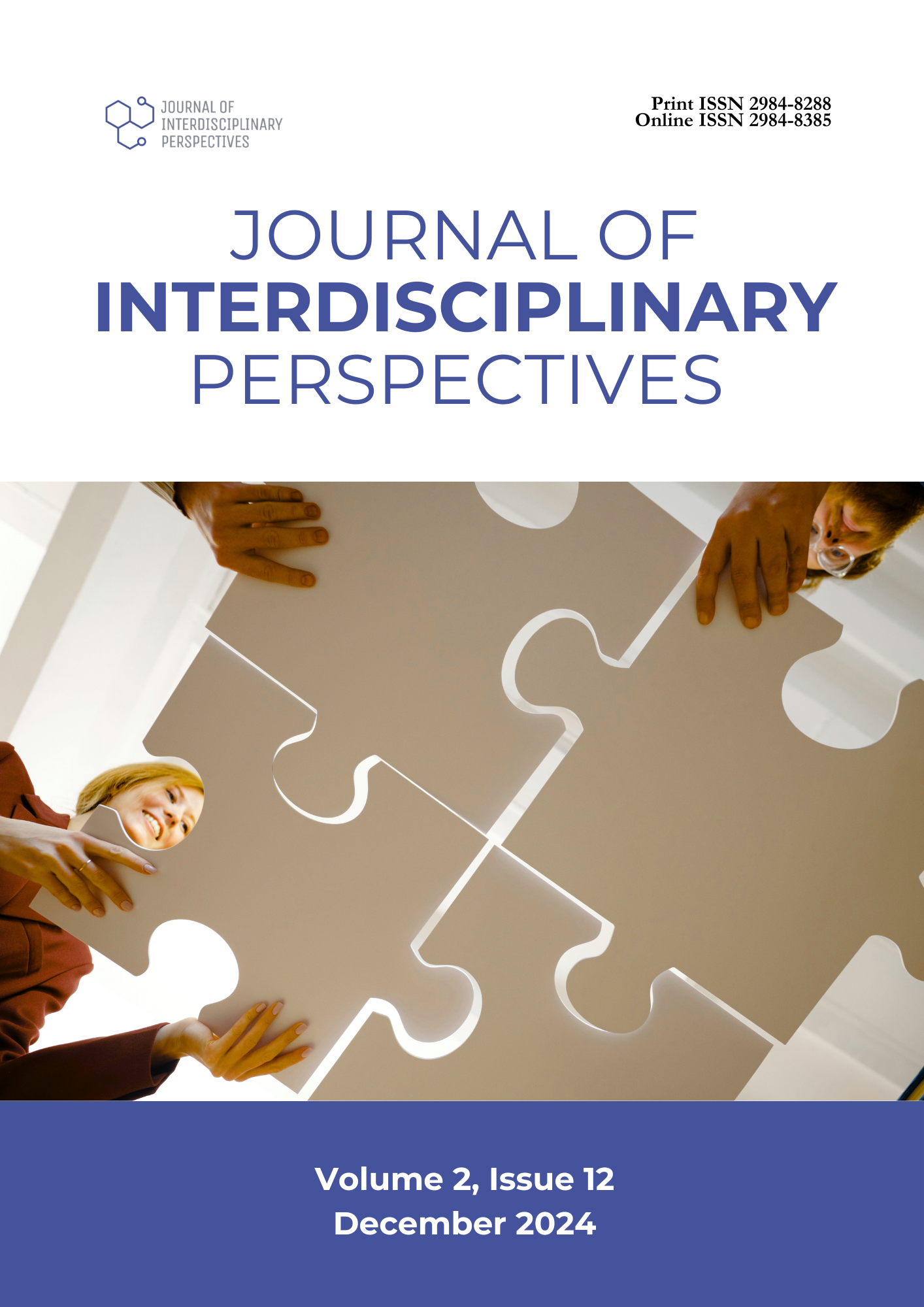Dancing Through Time: Unveiling the Cultural Evolution of Cagayan de Oro’s Oro Higalaay Festival
DOI:
https://doi.org/10.69569/jip.2024.0380Keywords:
Street dancing, Tableau presentation, Higalaay, Cagayan de OroAbstract
This study investigates the historical background and cultural significance of the Higalaay Street Dancing, a central feature of the Higalaay Festival in Cagayan de Oro City, Philippines. Despite its importance as a cultural celebration, the festival, particularly the street dancing aspect, remains underexplored in existing scholarly literature. This research aims to fill that gap by focusing on the evolution of the Oro Higalaay Street Dance, tracing its transformation from its origins in the Kagayha-an Festival up to the 2023 Oro Higalaay Festival. The festival has grown to emphasize key historical, social, economic, and religious milestones, all honored through its vibrant street dancing tradition. Particularly, the festival pays tribute to St. Augustine, the patron saint of Cagayan de Oro, adding a significant religious dimension to the celebration. The research highlights how the festival has come to symbolize the city’s rich cultural and historical values, making it an important avenue for cultural preservation. The study employs a phenomenological research design within a qualitative framework, relying on in-depth interviews, audio recordings, and the transcription of local experiences to gain a deeper understanding of the festival’s impact. Through this approach, the study uncovers the role of street dancing not just as a form of entertainment but as a medium for preserving local traditions and fostering cultural pride among the people of Cagayan de Oro and its neighboring communities. The latest version of the street dance features a combination of religious and cultural elements in its choreography, music, attire, and thematic presentations. These elements allow audiences to connect more deeply with the city’s heritage while the dance becomes a powerful storytelling vehicle. Ultimately, this research enhances the understanding of the festival’s role in sustaining cultural identity and preserving traditions through the dynamic medium of dance.
Downloads
References
Almaden, C. R. (2014). Political ecology of the small-scale gold mining in Cagayan de Oro City, Philippines. Retrieved fromhttp://dx.doi.org/10.2139/ssrn.2529411 Braun, V., & Clarke, V. (2006). Using thematic analysis in psychology. Qualitative Research in Psychology, 3(2), 77–101. https://doi.org/10.1191/1478088706qp063oa
Camurri, A., Mazzarino, B., Ricchetti, M., Timmers, R., & Volpe, G. (2004). Multimodal analysis of expressive gesture in music and dance performances. In Gesture-Based Communication in Human-Computer Interaction: 5th International Gesture Workshop, GW 2003, Genova, Italy
Carizal, C. (2023). Why Is Culture Important? Retrieved from https://enlightio.com/why-is-culture-important
Cilesiz, S. (2009). Educational computer uses in leisure contexts: A phenomenological study of adolescents' experiences at Internet cafes. American Educational Research Journal, 46(1) 232-
274. https://tinyurl.com/4me66jf
Creswell, J. W. (2007). Research design: Qualitative, quantitative, and mixed methods approaches. (2nd ed.). Thousand Oaks, CA: Sage.
Delve. Ho, L., & Limpaecher, A. (2022). What is Phenomenological Research Design? Essential Guide to Coding Qualitative Data. Retrieved from https://tinyurl.com/yc63xrv2 Diamond, B., Cronk, M. S., & Von Rosen, F. (1994). Visions of Sound: Musical Instruments of First Nation Communities in Northeastern America. University of Chicago Press. Dibia, I. W., & Ballinger, R. (2012). Balinese dance, drama & music: a guide to the performing arts of Bali. Tuttle Publishing.
Eddy, M. (2016). Dancing Solutions to Conflict: Field-Tested Somatic Dance for Peace. Journal of Dance Education, 16(3), 99–111. https://tinyurl.com/4djxkwns Ehrenreich, B. (2007). Dancing in the streets: A history of collective joy. Macmillan.
Gabao, L. (2007). Dance with Me. Philippine Normal University Press.
Gaston, A. M., & Gaston, T. (2014). Dance as a way of being religious (pp. 182-202). New York: Oxford University Press. Giddens, A. (2001). Sociology (4th Edition). Cambridge: Polity Press.
Jaimangal-Jones, D., Pritchard, A., & Morgan, N. (2015). Exploring dress, identity, and performance in contemporary dance music culture. Leisure Studies, 34 (5), 603-620. https://doi.org/10.1080/02614367.2014.962580
Kaeppler, A. L. (2000). Dance ethnology and the anthropology of dance. Dance Research Journal, 32(1), 116-125. https://tinyurl.com/2s479cbc
Meneely, J., & Portillo, M. (2005). The adaptable mind in design: Relating personality, cognitive style, and creative performance. Creativity Research Journal, 17(2-3), 155-166. https://tinyurl.com/msn5fa6y
Merriman, N. (2016). Beyond the glass case: the past, the heritage, and the public. Taylor & Francis. Moustakas, C. E. (1994). Phenomenological research methods. Sage Publications, Inc.
Munshi, A. (2022). The importance of religious festivals to promote cultural heritage in turkey and india. Al-Adabiya: Jurnal Kebudayaan Dan Keagamaan, 17(1), 41–50. https://doi.org/10.37680/adabiya.v17i1.1336
Olokodana–James, O. (2022). Festivals and dance as catalysts for ethno-cultural integration and identity formation. Retrieved from https://tinyurl.com/caezwrz3 Picard, D., & Robinson, M. (2006). Festivals, Tourism and Social Change: Remaking Worlds. Channel View Publications
Satur, L. (2018). Vibrancy of Public Spaces: Inclusivity and Participation Amidst the Challenges in Transformative Process in the City of Cagayan de Oro, Philippines (Dissertation) University of Passau
Teherani, A., Martimianakis, M., Stenfors-Hayes, T., Wadhwa, A., & Varpio, L. (2015). Choosing a Qualitative Research Approach. Retrieved from https://tinyurl.com/b7tt5skk Villa, N. (2020). Revisiting Cagayan de Oro History in a Water Tower. Retrieved from https://tinyurl.com/twd822zv
Villones, R. (2020). Negros Panaad Festival Dances: A Reflection of Negrenses’ Cultural Identity. Asia Pacific Journal of Multidisciplinary Research, 8(3), 13-24. https://tinyurl.com/397yd74y
Downloads
Published
How to Cite
Issue
Section
License
Copyright (c) 2025 Journal of Interdisciplinary Perspectives

This work is licensed under a Creative Commons Attribution-NonCommercial 4.0 International License.








